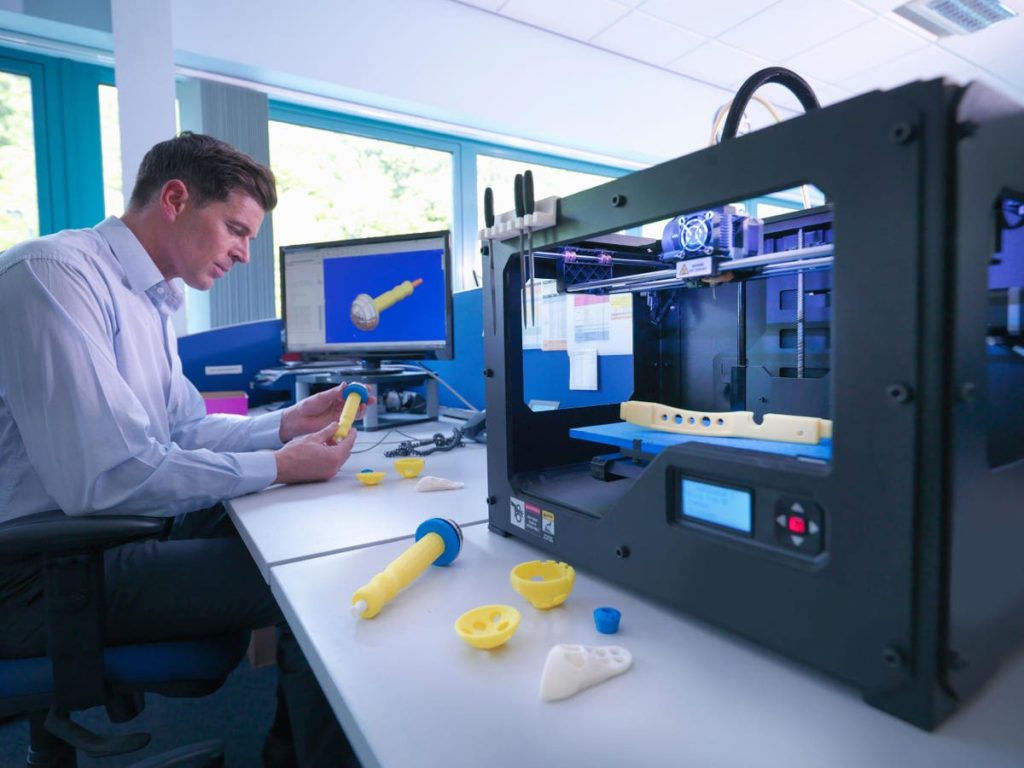Bryan Crutchfield is Vice President and General Manager, North America for Materialise, a global leader in 3D printing.
Personalization is a growing trend in many sectors—from customized apps on our phones, TVs and computers to automakers offering vehicle trim levels and increasing software options. In some cases, however, it can be life-saving.
In the medical field, where no two patients are the same, traditional blanket solutions can be both ineffective and discouraging. Using a standard approach for unique patients can lower success rates and lead to costly and inconvenient return visits.
With innovative planning and manufacturing technologies, clinicians now have the ability to deliver patient-specific care with the potential to greatly improve outcomes and save lives. This adds up to a trend of mass personalization and customized treatment.
Forms Of Personalization In Health Care
Personalization in health care comes in many forms. It can be as simple as letting patients choose between in-person and virtual appointments or as complex as using genetic information to make treatment decisions. For example, the latter can be used to help doctors understand which of their patients are genetically predisposed to developing certain conditions.
Furthermore, 3D technologies, a technology within my area of expertise, can be used to plan for procedures and create patient-specific implants that replace damaged or nonexistent bone. There are many companies in the mass personalization space, collectively working to improve patient outcomes by normalizing solutions that are as unique as each patient.
Trends And Predictions For Mass Personalization
Last year, my company held an event that brought together clinicians, researchers and experts from medical device companies to highlight the opportunities and challenges of mass personalization in the medical field. Most attendees (89%) think the technology will be sustainable for common clinical applications or will be the new standard of care in 10 years.
More than 95% of attendees saw 3D printing at the point of care as an opportunity, especially to support planning for medical procedures. The ability to integrate 3D printing into hospitals and clinics is also becoming part of many medical device companies’ product strategies.
A little more than 70% of the attendees thought that in 10 years, the use of data, artificial intelligence (AI) and statistical shape modeling will take over humans’ role when it comes to predictive planning. However, some, including those on a panel, disagreed, saying data and modeling are merely tools humans use to prepare for the procedure.
There is an argument for there being no replacement for the human ingenuity required to take into consideration nuances of the human body or complex procedures. AI may be able to help with routine procedures in the near future, but it is only as good as its data and does not have the ability to react to unexpected situations.
A Variety Of Solutions Within 3D Printing
The future will tell to what extent human expertise will be replaced, but in the meantime, many companies are making strides in the 3D printing and planning medical space.
These companies work on a variety of solutions. For example, a team of researchers from ETH Zurich working with Strait Access Technologies has completed initial testing on its 3D-printed silicone heart valves. Meanwhile, Dr. Matthew Griffith from the University of Sydney has designed a 3D-printed retina made of carbon. Clinical trials of the retina could start within the coming years and help restore patients’ sight.
U.S.-based Monogram Orthopedics is designing replacement knees that are as close to patients’ original anatomy as possible, making implants less painful and less likely to fail. Finally, researchers at North Carolina State University have developed a textile-based implant containing cartilage derived from a patient’s stem cells. This type of cartilage preserves joint surfaces and was successfully tested on dogs with hip problems.
From silicone to cartilage to metal, the ability to create personalized implants on-site and get them to physicians—along with improvements in other areas like telehealth and genetics—promises to revolutionize mass personalization.
In the case of personalized health care, those in the medical field are zooming in on the individual patient to improve treatment for everyone. By looking to innovative planning and manufacturing technologies, the medical community—from medical device companies to hospital systems—can implement a patient-specific approach to medical care.
Forbes Business Council is the foremost growth and networking organization for business owners and leaders. Do I qualify?
Read the full article here










